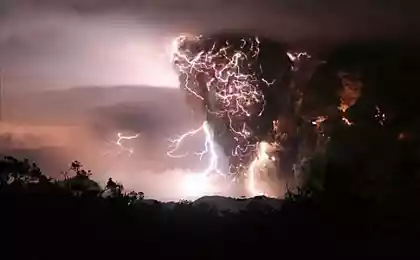906
Secrets of the caravan from the land of the Rising Sun.
Historical records: total espionage Japanese
In the global public consciousness the concept of "total espionage" is associated with Nazi Germany, and a scientist yaponista known that this phenomenon was born, and over the centuries created and perfected in Japan.
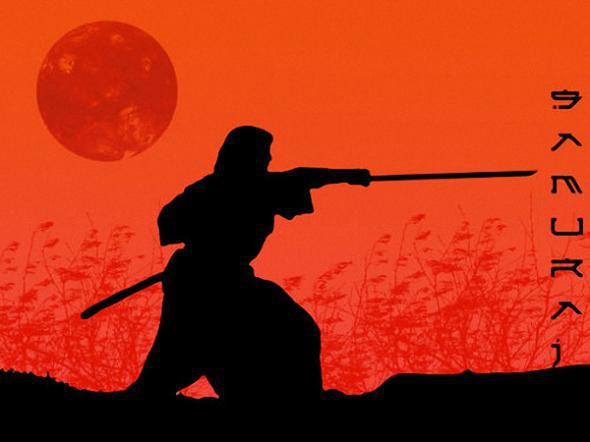
According to experts, the Japanese espionage originates from the middle of the XIX century. Before that Japan was a country closed to foreigners. But July 8, 1853 in the Bay of Edo became powerful American squadron under Commodore Perry.
Getting off the shore, accompanied by heavily armed guards, Commodore gave the Japanese government a letter from then US President Fillmore. In the form of an ultimatum to the Japanese proposed to grant the United States the right to trade in the country. Then he rushed to the British and French merchants and the Japanese emperor imposed treaties with broad powers for themselves. Since then, Japan has ceased to be a closed country.
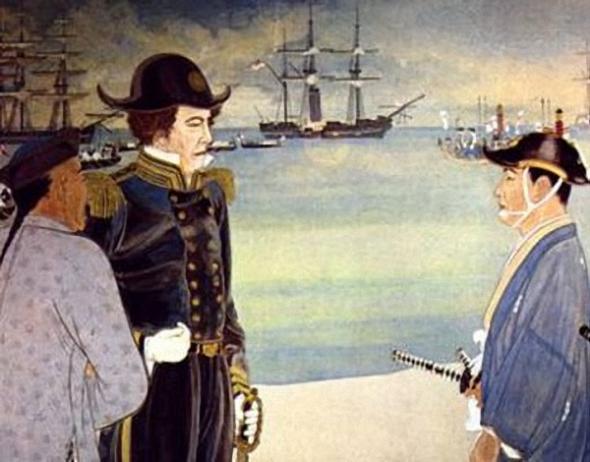
Scout "RISING SUN».
With the development of capitalist relations, the Japanese government has been sending a lot of diplomatic, trade and naval missions for obtaining information in Europe and America. As interns penetrated the Japanese industrial companies Old and New World, as their owners were forced to hire Japanese. It was a kind of payment for the right to trade in Japan.
Under the guise of Japanese workers were experienced engineers, who arrived for the industrial secrets of the West. Economic espionage is also engaged in a variety of Japanese delegation, students and tourists.
Of course, the Japanese went abroad, not only in order to spy. However, when it represents an opportunity to get some information, they did it and transmit it to the Japanese consul, and on his return to his homeland - police officials. The roots of this phenomenon go back to the mists of time, when the Japanese rulers are widely used detectives, voluntary and recruited informants. Scientists believe that these practices have developed a penchant for spying nation, which is so ingrained that the Japanese have them wherever falls opportunity, and even more so when traveling abroad. The ratio of Japanese espionage was (and still is!), In full compliance with their cult of service to the motherland and the ideals of patriotism, which is based on the idea of God's chosen people of Japanese Shinto.
It was rare to meet a Japanese tourist without a camera, albeit without it - the observer by vocation. Lacking the skills to give a correct assessment of the observed, the Japanese often collect a lot of useless information that is carefully recorded in his travel diary and eventually accumulated in the heart of Tokyo's intelligence.
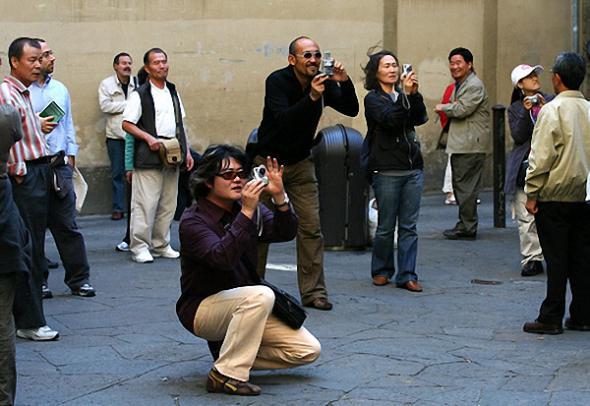
Reports from both the professional agents, and fans of the initiative transferred to the Centre in various ways: through the consulate, which is passed intelligence information to the embassy by courier, in turn, sends it to the Embassy of Japan to the pouch; through special agents, couriers, operating under the guise of being on a mission of inspectors; by captains of Japanese trade and passenger ships, which usually reports were presented at the last minute before sailing to Japan. From the Center agents extracted information is sent to the intelligence unit of the army, the navy and the Ministry of Foreign Affairs, where it was recorded, classified and analyzed, and then came to the staff officers.
A major role in the activities of Japanese intelligence played a patriotic society. The number of agents recruited people from all social strata. They are united by one common goal: the establishment of Japanese control over Asia, and eventually the whole world.
The largest was a patriotic society "Kokuryukay" ("Black Dragon"), there were over 100 000 members. His cell is in the United States, Latin America and North Africa.
"Black Dragon" - is the Chinese name for the Amur River that separated Manchuria and Russia. The name of the company hidden allusion to his main goal in Japan - to oust Russian for Cupid, from Korea and from any other place in the Pacific region. In other words, the main direction of activity of the company was the war with Russia.
Some of the smaller, but no less aggressive societies concerned "Great Awakening of Asia", "The White Wolf" and "Turan". Their activities developed in five areas: the study of the economic, geographic, educational, colonial and religious situation in Central Asia and Siberia to Japan after the seizure of these regions to ensure there is power to the emperor.

At the end of World War II, Japanese intelligence at the center of attention of Western intelligence agencies. Specific methods of operation brought colleagues from the CIA and SIS in genuine surprise. For example, a young employee of French Foreign Minister Bernard Bursiko managed to attach to a Japanese spy craft agent recruiter, a professional opera singer, pretending to be a woman ...!
After many years of Japanese sources become known equally impressive history. A young American woman of Japanese descent drowned during his stay in Japan in the mid-1950s. Employees of the Japanese secret service caught her body and documents. Fluent in English agentesse (online alias Lily Petal) had plastic surgery, and as a result it has acquired the appearance of the deceased. In the end, Lily appeared in the Japanese quarter of New York, where she spent several years successfully acted as agent recruiter. As the transformation of Japan into an economic superpower, it has become one of the main customers of industrial espionage.
In 1990, "Nissan Motors", "Isikavadzima-Harima Heavy Industries" and "Mitsubishi Heavy Industries" - Japanese companies operating in the aerospace field, American businessman bought computer software. The American was arrested for selling military technology without a license. Confiscated during the arrest categorically computer programs to be sold, as developed by the Americans as part of the Strategic Defense Initiative (SDI - Star Wars program). Since then, the Japanese believe that industrial espionage - this is intelligence, which belongs to the future, so it has support at the highest state level. And it starts with the young generation.
In Japan, students are exempt from military duties, if they agree to go to the Western countries as spies. They also are trained: at the end of higher education free of laboratory assistants hired to scientists engaged in research in the area in which they subsequently have to deal with getting to the country.
At the University of Tokyo have a technical college that Western intelligence agencies called source of manpower for industrial espionage. Students are there to train in the theory of Scientific and Technical Intelligence, and then as part of a cultural exchange between the countries they are sent to the United States, Germany, Britain or France. For example, during a visit to a French fotofirmy Japanese students-tourists "accidentally" dipped the tips of his ties to the chemicals, then to find their components.
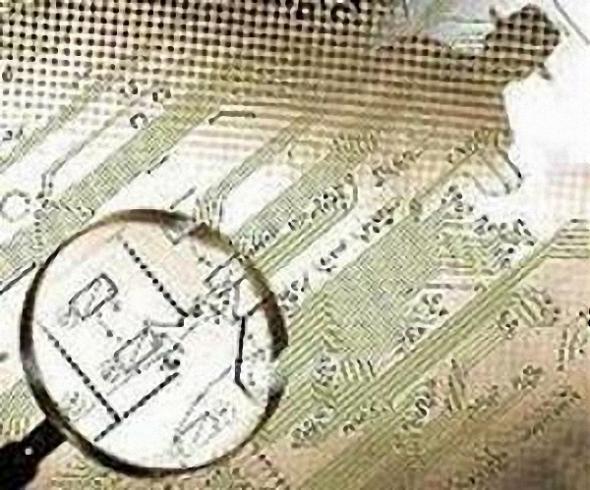
Black sand
In 1978, the Japanese firm "Asahara" appealed to the Ministry of Foreign Trade with a request to hand over her two-year lease of land in the coastal area near the village Ozernovsky that on the southeastern tip of the Kamchatka Peninsula.
His firm intention motivated by the need to build in this area of recreation for the crews of fishing vessels fishing in international waters of the Okhotsk Sea.
The Soviets went to meet management "Asahara", the contract was concluded, however, according to the observations of Soviet border guards, the Japanese did not hurry with the construction of the recreation center, all attention is focused on the export of so-called black sand from the coastal zone.
Guide their actions "Asahara" explains the preparatory work for the subsequent erection of houses, piers, etc. Moreover, the volume of exported sand was so great that it was common joke among the guards: "Soon we will go on a tour to Japan. Is in full swing laying underground lines Ozernovsky Tokyo! »
However, the Japanese Foreign Ministry hastened to assure the Soviet side, the sand is simply dumped in the sea.
At the direction of the KGB chairman Yuri Andropov to track the routes of Japanese ships with the sand on the board was connected space exploration.
It turned out that the sand carefully transported to Japan, where scrupulously to the grains stored in special water protection hangars.
By order of Andropov's KGB special laboratory was conducted chemical and biological analysis of exported Japanese black sand.
It was found that sand, the locals nicknamed "black" is none other than the volcanic ash periodically active volcano Mayon, located near the island of Catanduanes (Philippines).
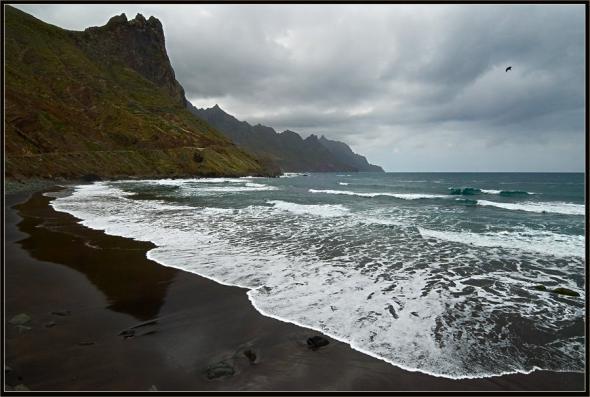
Mayon throws the coastal waters of the Philippine Sea volcanic ash, which is on the bottom of the Izu-Bonin and Japan Trench Pacific over imposed only on the coast of Kamchatka, in particular - in the area of the village Ozernovsky.
Laboratory studies have shown that the ashes literally oversaturated rare earth elements: scandium, yttrium, lanthanum and lantonidami. In addition, the black sand found high levels of gold and platinum.
The coastal area in the village Ozernovo - the only place on the globe where the open pit mine can be listed rare earth metals, is actively used in electronics, laser and optical technology.
In 1979, the lease was terminated Ministry of Foreign Trade unilaterally, the Foreign Ministry sent to the Japanese side a protest note from the KGB to the Central Committee left a memo in which, in particular, noted: "... Japan radio-electronic industry matured exclusively due to the black sand, fraudulently exported from the south-east coast of the Kamchatka Peninsula ... It is disturbing that so far none of the Federal Ministry is not interested in the development of the wealth that lies literally under their feet »

Window glass
In 1976, the USSR Council of Ministers asked the general director of the Japanese parastatals "Ikebukuro" with a proposal to buy in our country, significant quantities of window glass. This Japanese counterpart Ministry of Foreign Trade was ready, regardless of the cost to acquire the glass echelons! The prospect of the deal was more than attractive - the production of window glass to dispense USSR penny.
The contract was signed, and hundreds of platforms, loaded with glass, moved towards the port of Nakhodka, where the "most valuable export commodity" was in a Japanese dry cargo holds ...
Only three years later the KGB through its agents zakordonnuyu found that served as the glass cover. As soon as the caravan of bulk carriers with the next batch of glass left the port of Nakhodka and out to the open sea, the entire crew heard pliers for nails, and they began smashing the glass container with a showcase. But how?! Boards, accessories neatly peeled off, sorted and stored in a stack, which then special winches lowered into the holds. A glass discharged overboard.
Razukomplektatsiya containers held at the minimum speed of the vessel, and only with the onset of darkness in the light of on-board projectors. These precautions were intended to preserve the true purpose of the acquisition of glass in secret unexpected witnesses passing nearby vessels as well as aircraft and helicopters of Soviet border guards.
For the purposes of the administration of the conspiracy "Ikebukuro" shaped hackney only one run. It consisted of migrant workers recruited in Southeast Asia and Indonesia, ready for little pay for any work. At the close of day laborers in batches of 20 people under the supervision of armed guards escorted into the wardroom, where they handed over $ 5. And fed. This forcibly made to drink a glass of rice wine, which is mixed into drugs cause temporary paramnesia. This was done to ensure that after the cancellation of the shore, none of the workers could not remember what he did on the ship.
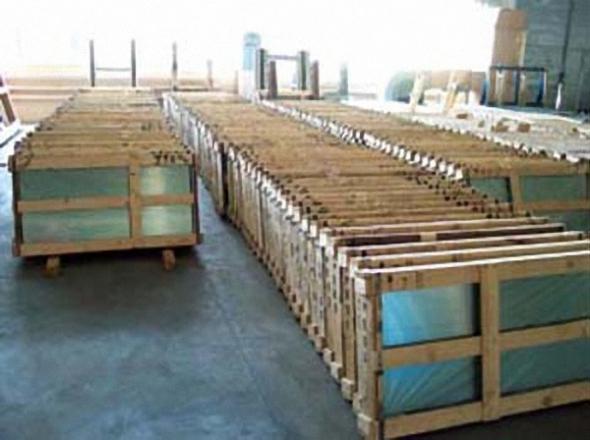
According to reports, in just one flight a caravan of dry cargo delivered to the Land of the Rising Sun to 10 ths. Cub. m of valuable timber. And all because any of our products, marching on exports, according to tradition sheathe valuable and hard wood: cedar pine, beech and oak. It is from this wood and were manufactured containers for window glass. Fittings, not glass interested in Japanese ... Due to the machinations of the glass with a showcase, Japan, which has no natural resources of wood, at the end of the XX century came in third, after Spain and Italy, for exports to the world market of environmentally friendly furniture!
From wood inherited the gift of "Ikebukuro" producing exquisite furniture, which comes to Arab oil sheiks, the United States and even in Western Europe.
Sarcastic grimace Japanese business: in 1982 "Ikebukuro" sold the Property Management Department of the Council of Ministers of the USSR furniture made from our wood for a cabinet ... predsovmina Nikolai Tikhonov!

Faience EXPORT
While in the United States for national security built high-speed highway, the Soviet Union with the same purpose, to expand and modernize its railways. The CIA knew that the Soviet strategic missile systems developed and produced in the west and center of the country, and then on the Trans-Siberian Railway transported to the east, which were established and were aimed at facilities in the United States. By the early 1980s the Americans had information about the whereabouts of the majority of our strategic nuclear missiles permanent home. However, they did not have data on our mobile missile systems (according to the American classification - MIRV) with ten independently targetable warheads mounted on railway platforms, camouflaged under the carriages. And then the Americans came to the aid of the Japanese ...
In the late 1980s, private Japanese company "Shochiku" attracted the attention of counterintelligence Primorye fact that for six months on a regular basis, once a month, delivered to the port of Nakhodka, earthenware vases then send them to Hamburg.
It seemed nothing to complain about: the supporting documents are always in perfect order, the goods is neutral, the danger to the environment (and of interest to burglars!) Is not located in a sealed metal container outside on the train platform. Yet some features of faience export alarmed ...
- Okay, exported to the vase representing the artistic value, and that in fact - ordinary pots! - Argued the chief of KGB in the Primorsky Territory, Major-General will, again and again returning to the issue of carriage of goods of Japanese craftsmen. - Is the game worth the candle? After shards, which is worthless in the market day, driven somehow to the country, which is famous Dresden china! Why is that? And the luggage through the Union for the Trans-Siberian Railway - the journey is not cheap ... It turns out that after repayment of invoices and travel expenses ceramic pots should cost as much as gold ... Is that it ?! I wonder how much the Japanese are selling them in Hamburg? Well, that's the case ... So, so! Or I must retire due to delusions of persecution or under my nose Japs crank something illegal ... Yes, while still laugh at klutz of customs and counter! Similarly, there is something wrong! Better, as they say, safe than nedobdet! "- Summed up the chief of counterintelligence and coastal its views set out in the Code telegram during the Second Chief Directorate of the KGB.
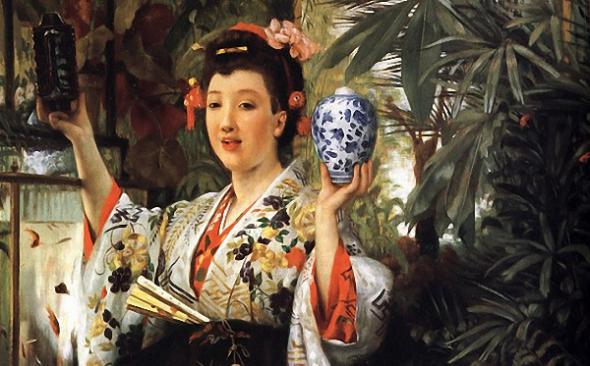
Employees 5th (Japanese) department quickly established that "Shochiku" is closely linked to major American companies operating in electronic branch of the military-industrial complex, and, in fact, is she on the content, as the registered capital of the Japanese firm's 80% of American origin. This, according to sources zakordonnyh was the most guarded secret "Shochiku» ...
The machinations of the military industrial complex of the United States engaged in the 1st (US) department, so from the Maritime Code telegram was on the desk of his boss - Major General Krasilnikov.
via
Source:
In the global public consciousness the concept of "total espionage" is associated with Nazi Germany, and a scientist yaponista known that this phenomenon was born, and over the centuries created and perfected in Japan.

According to experts, the Japanese espionage originates from the middle of the XIX century. Before that Japan was a country closed to foreigners. But July 8, 1853 in the Bay of Edo became powerful American squadron under Commodore Perry.
Getting off the shore, accompanied by heavily armed guards, Commodore gave the Japanese government a letter from then US President Fillmore. In the form of an ultimatum to the Japanese proposed to grant the United States the right to trade in the country. Then he rushed to the British and French merchants and the Japanese emperor imposed treaties with broad powers for themselves. Since then, Japan has ceased to be a closed country.

Scout "RISING SUN».
With the development of capitalist relations, the Japanese government has been sending a lot of diplomatic, trade and naval missions for obtaining information in Europe and America. As interns penetrated the Japanese industrial companies Old and New World, as their owners were forced to hire Japanese. It was a kind of payment for the right to trade in Japan.
Under the guise of Japanese workers were experienced engineers, who arrived for the industrial secrets of the West. Economic espionage is also engaged in a variety of Japanese delegation, students and tourists.
Of course, the Japanese went abroad, not only in order to spy. However, when it represents an opportunity to get some information, they did it and transmit it to the Japanese consul, and on his return to his homeland - police officials. The roots of this phenomenon go back to the mists of time, when the Japanese rulers are widely used detectives, voluntary and recruited informants. Scientists believe that these practices have developed a penchant for spying nation, which is so ingrained that the Japanese have them wherever falls opportunity, and even more so when traveling abroad. The ratio of Japanese espionage was (and still is!), In full compliance with their cult of service to the motherland and the ideals of patriotism, which is based on the idea of God's chosen people of Japanese Shinto.
It was rare to meet a Japanese tourist without a camera, albeit without it - the observer by vocation. Lacking the skills to give a correct assessment of the observed, the Japanese often collect a lot of useless information that is carefully recorded in his travel diary and eventually accumulated in the heart of Tokyo's intelligence.

Reports from both the professional agents, and fans of the initiative transferred to the Centre in various ways: through the consulate, which is passed intelligence information to the embassy by courier, in turn, sends it to the Embassy of Japan to the pouch; through special agents, couriers, operating under the guise of being on a mission of inspectors; by captains of Japanese trade and passenger ships, which usually reports were presented at the last minute before sailing to Japan. From the Center agents extracted information is sent to the intelligence unit of the army, the navy and the Ministry of Foreign Affairs, where it was recorded, classified and analyzed, and then came to the staff officers.
A major role in the activities of Japanese intelligence played a patriotic society. The number of agents recruited people from all social strata. They are united by one common goal: the establishment of Japanese control over Asia, and eventually the whole world.
The largest was a patriotic society "Kokuryukay" ("Black Dragon"), there were over 100 000 members. His cell is in the United States, Latin America and North Africa.
"Black Dragon" - is the Chinese name for the Amur River that separated Manchuria and Russia. The name of the company hidden allusion to his main goal in Japan - to oust Russian for Cupid, from Korea and from any other place in the Pacific region. In other words, the main direction of activity of the company was the war with Russia.
Some of the smaller, but no less aggressive societies concerned "Great Awakening of Asia", "The White Wolf" and "Turan". Their activities developed in five areas: the study of the economic, geographic, educational, colonial and religious situation in Central Asia and Siberia to Japan after the seizure of these regions to ensure there is power to the emperor.

At the end of World War II, Japanese intelligence at the center of attention of Western intelligence agencies. Specific methods of operation brought colleagues from the CIA and SIS in genuine surprise. For example, a young employee of French Foreign Minister Bernard Bursiko managed to attach to a Japanese spy craft agent recruiter, a professional opera singer, pretending to be a woman ...!
After many years of Japanese sources become known equally impressive history. A young American woman of Japanese descent drowned during his stay in Japan in the mid-1950s. Employees of the Japanese secret service caught her body and documents. Fluent in English agentesse (online alias Lily Petal) had plastic surgery, and as a result it has acquired the appearance of the deceased. In the end, Lily appeared in the Japanese quarter of New York, where she spent several years successfully acted as agent recruiter. As the transformation of Japan into an economic superpower, it has become one of the main customers of industrial espionage.
In 1990, "Nissan Motors", "Isikavadzima-Harima Heavy Industries" and "Mitsubishi Heavy Industries" - Japanese companies operating in the aerospace field, American businessman bought computer software. The American was arrested for selling military technology without a license. Confiscated during the arrest categorically computer programs to be sold, as developed by the Americans as part of the Strategic Defense Initiative (SDI - Star Wars program). Since then, the Japanese believe that industrial espionage - this is intelligence, which belongs to the future, so it has support at the highest state level. And it starts with the young generation.
In Japan, students are exempt from military duties, if they agree to go to the Western countries as spies. They also are trained: at the end of higher education free of laboratory assistants hired to scientists engaged in research in the area in which they subsequently have to deal with getting to the country.
At the University of Tokyo have a technical college that Western intelligence agencies called source of manpower for industrial espionage. Students are there to train in the theory of Scientific and Technical Intelligence, and then as part of a cultural exchange between the countries they are sent to the United States, Germany, Britain or France. For example, during a visit to a French fotofirmy Japanese students-tourists "accidentally" dipped the tips of his ties to the chemicals, then to find their components.

Black sand
In 1978, the Japanese firm "Asahara" appealed to the Ministry of Foreign Trade with a request to hand over her two-year lease of land in the coastal area near the village Ozernovsky that on the southeastern tip of the Kamchatka Peninsula.
His firm intention motivated by the need to build in this area of recreation for the crews of fishing vessels fishing in international waters of the Okhotsk Sea.
The Soviets went to meet management "Asahara", the contract was concluded, however, according to the observations of Soviet border guards, the Japanese did not hurry with the construction of the recreation center, all attention is focused on the export of so-called black sand from the coastal zone.
Guide their actions "Asahara" explains the preparatory work for the subsequent erection of houses, piers, etc. Moreover, the volume of exported sand was so great that it was common joke among the guards: "Soon we will go on a tour to Japan. Is in full swing laying underground lines Ozernovsky Tokyo! »
However, the Japanese Foreign Ministry hastened to assure the Soviet side, the sand is simply dumped in the sea.
At the direction of the KGB chairman Yuri Andropov to track the routes of Japanese ships with the sand on the board was connected space exploration.
It turned out that the sand carefully transported to Japan, where scrupulously to the grains stored in special water protection hangars.
By order of Andropov's KGB special laboratory was conducted chemical and biological analysis of exported Japanese black sand.
It was found that sand, the locals nicknamed "black" is none other than the volcanic ash periodically active volcano Mayon, located near the island of Catanduanes (Philippines).

Mayon throws the coastal waters of the Philippine Sea volcanic ash, which is on the bottom of the Izu-Bonin and Japan Trench Pacific over imposed only on the coast of Kamchatka, in particular - in the area of the village Ozernovsky.
Laboratory studies have shown that the ashes literally oversaturated rare earth elements: scandium, yttrium, lanthanum and lantonidami. In addition, the black sand found high levels of gold and platinum.
The coastal area in the village Ozernovo - the only place on the globe where the open pit mine can be listed rare earth metals, is actively used in electronics, laser and optical technology.
In 1979, the lease was terminated Ministry of Foreign Trade unilaterally, the Foreign Ministry sent to the Japanese side a protest note from the KGB to the Central Committee left a memo in which, in particular, noted: "... Japan radio-electronic industry matured exclusively due to the black sand, fraudulently exported from the south-east coast of the Kamchatka Peninsula ... It is disturbing that so far none of the Federal Ministry is not interested in the development of the wealth that lies literally under their feet »

Window glass
In 1976, the USSR Council of Ministers asked the general director of the Japanese parastatals "Ikebukuro" with a proposal to buy in our country, significant quantities of window glass. This Japanese counterpart Ministry of Foreign Trade was ready, regardless of the cost to acquire the glass echelons! The prospect of the deal was more than attractive - the production of window glass to dispense USSR penny.
The contract was signed, and hundreds of platforms, loaded with glass, moved towards the port of Nakhodka, where the "most valuable export commodity" was in a Japanese dry cargo holds ...
Only three years later the KGB through its agents zakordonnuyu found that served as the glass cover. As soon as the caravan of bulk carriers with the next batch of glass left the port of Nakhodka and out to the open sea, the entire crew heard pliers for nails, and they began smashing the glass container with a showcase. But how?! Boards, accessories neatly peeled off, sorted and stored in a stack, which then special winches lowered into the holds. A glass discharged overboard.
Razukomplektatsiya containers held at the minimum speed of the vessel, and only with the onset of darkness in the light of on-board projectors. These precautions were intended to preserve the true purpose of the acquisition of glass in secret unexpected witnesses passing nearby vessels as well as aircraft and helicopters of Soviet border guards.
For the purposes of the administration of the conspiracy "Ikebukuro" shaped hackney only one run. It consisted of migrant workers recruited in Southeast Asia and Indonesia, ready for little pay for any work. At the close of day laborers in batches of 20 people under the supervision of armed guards escorted into the wardroom, where they handed over $ 5. And fed. This forcibly made to drink a glass of rice wine, which is mixed into drugs cause temporary paramnesia. This was done to ensure that after the cancellation of the shore, none of the workers could not remember what he did on the ship.

According to reports, in just one flight a caravan of dry cargo delivered to the Land of the Rising Sun to 10 ths. Cub. m of valuable timber. And all because any of our products, marching on exports, according to tradition sheathe valuable and hard wood: cedar pine, beech and oak. It is from this wood and were manufactured containers for window glass. Fittings, not glass interested in Japanese ... Due to the machinations of the glass with a showcase, Japan, which has no natural resources of wood, at the end of the XX century came in third, after Spain and Italy, for exports to the world market of environmentally friendly furniture!
From wood inherited the gift of "Ikebukuro" producing exquisite furniture, which comes to Arab oil sheiks, the United States and even in Western Europe.
Sarcastic grimace Japanese business: in 1982 "Ikebukuro" sold the Property Management Department of the Council of Ministers of the USSR furniture made from our wood for a cabinet ... predsovmina Nikolai Tikhonov!

Faience EXPORT
While in the United States for national security built high-speed highway, the Soviet Union with the same purpose, to expand and modernize its railways. The CIA knew that the Soviet strategic missile systems developed and produced in the west and center of the country, and then on the Trans-Siberian Railway transported to the east, which were established and were aimed at facilities in the United States. By the early 1980s the Americans had information about the whereabouts of the majority of our strategic nuclear missiles permanent home. However, they did not have data on our mobile missile systems (according to the American classification - MIRV) with ten independently targetable warheads mounted on railway platforms, camouflaged under the carriages. And then the Americans came to the aid of the Japanese ...
In the late 1980s, private Japanese company "Shochiku" attracted the attention of counterintelligence Primorye fact that for six months on a regular basis, once a month, delivered to the port of Nakhodka, earthenware vases then send them to Hamburg.
It seemed nothing to complain about: the supporting documents are always in perfect order, the goods is neutral, the danger to the environment (and of interest to burglars!) Is not located in a sealed metal container outside on the train platform. Yet some features of faience export alarmed ...
- Okay, exported to the vase representing the artistic value, and that in fact - ordinary pots! - Argued the chief of KGB in the Primorsky Territory, Major-General will, again and again returning to the issue of carriage of goods of Japanese craftsmen. - Is the game worth the candle? After shards, which is worthless in the market day, driven somehow to the country, which is famous Dresden china! Why is that? And the luggage through the Union for the Trans-Siberian Railway - the journey is not cheap ... It turns out that after repayment of invoices and travel expenses ceramic pots should cost as much as gold ... Is that it ?! I wonder how much the Japanese are selling them in Hamburg? Well, that's the case ... So, so! Or I must retire due to delusions of persecution or under my nose Japs crank something illegal ... Yes, while still laugh at klutz of customs and counter! Similarly, there is something wrong! Better, as they say, safe than nedobdet! "- Summed up the chief of counterintelligence and coastal its views set out in the Code telegram during the Second Chief Directorate of the KGB.

Employees 5th (Japanese) department quickly established that "Shochiku" is closely linked to major American companies operating in electronic branch of the military-industrial complex, and, in fact, is she on the content, as the registered capital of the Japanese firm's 80% of American origin. This, according to sources zakordonnyh was the most guarded secret "Shochiku» ...
The machinations of the military industrial complex of the United States engaged in the 1st (US) department, so from the Maritime Code telegram was on the desk of his boss - Major General Krasilnikov.
via
Source:










